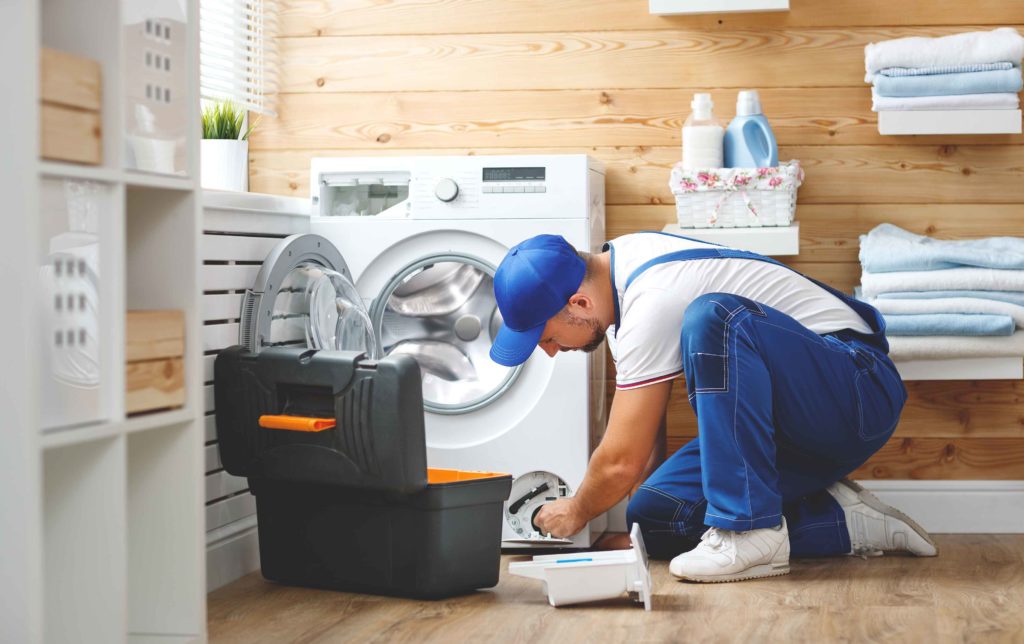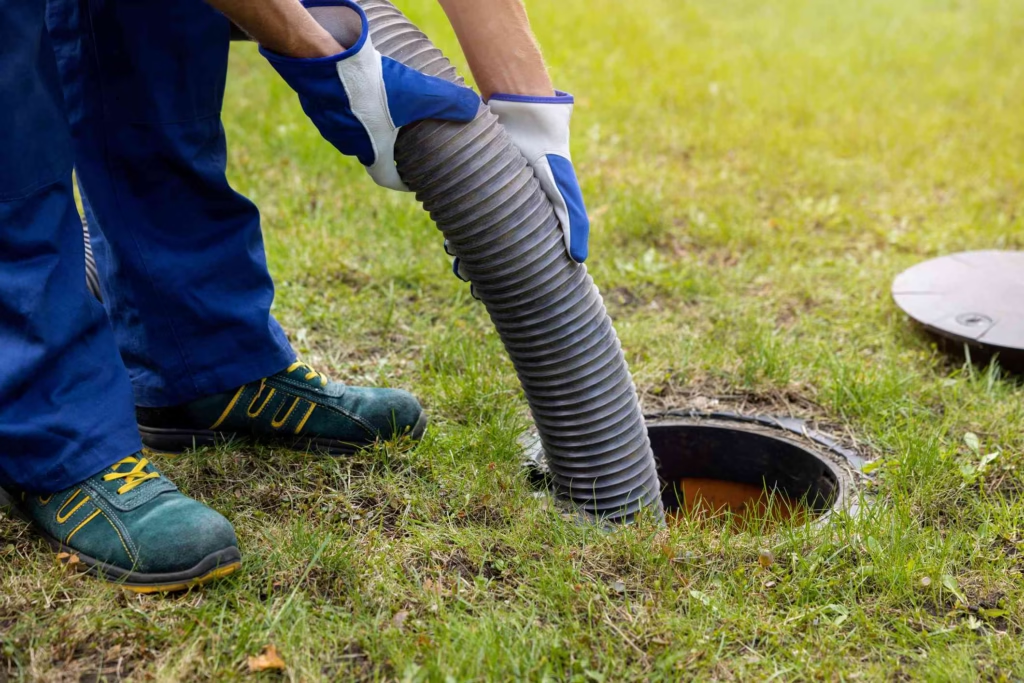Household appliances have undergone a significant metamorphosis, transitioning from purely mechanical workhorses to sophisticated, electronically controlled systems, notes Dawson Property Management team. While these advancements have brought about substantial improvements in energy efficiency, performance, and user experience, they have simultaneously introduced new and intricate challenges in the realm of appliance repair. This is particularly evident in high-density urban areas such as the Washington D.C. Metropolitan (DMV) area, specifically Alexandria, VA, and Washington, DC.
A thorough understanding of how contemporary appliances fail—and, crucially, how they are accurately diagnosed and effectively repaired—is paramount for homeowners, property managers, and service professionals alike. This comprehensive article delves into common failure modes of washers, dryers, and refrigerators, emphasizing advanced diagnostics, precise repair methodologies, and pertinent environmental considerations that influence serviceability in urban landscapes.
The Complexity of Modern Appliance Design
Contemporary appliances are intricately designed, frequently incorporating an array of sensors, microcontrollers, and sophisticated diagnostic software. While these embedded technologies are engineered to streamline operations and enhance user convenience, they paradoxically introduce a greater number of potential points of failure. Unlike the simpler repair scenarios of yesteryear, where a basic switch or mechanical timer might be the sole culprit, today’s technicians routinely encounter issues with logic boards, thermistors, inverter boards, and even underlying firmware malfunctions.
Consider these illustrative examples:
- A washer exhibiting a spin failure might not necessarily indicate a direct-drive motor malfunction, but rather a defective hall sensor responsible for monitoring drum rotation.
- A refrigerator failing to cool could point to a compromised inverter board that regulates the variable-speed compressor, as opposed to a mere faulty thermostat.
- Dryers equipped with advanced electronic control panels often display cryptic error codes that necessitate interpretation using brand-specific service manuals or proprietary diagnostic tools accessible only to trained professionals.
These added layers of technological complexity fundamentally shift the paradigm of appliance repair from a predominantly part-replacement exercise to one demanding rigorous, accurate root cause analysis—an approach that industry leaders like EasyFix Appliance Repair have perfected to meet the evolving needs of modern households.
Technical Approach to Washer and Dryer Failures
Common Washer Failures:
- Drainage and Spin Issues: These ubiquitous problems can be attributed to a variety of factors, including clogged drain pumps, failed pressure switches (which sense water levels), or, increasingly, sophisticated board-level failures in machines utilizing load-sensing technology to optimize water usage.
- Inverter Motor Failures: In modern, high-efficiency front-loading machines, brushless DC (BLDC) motors, meticulously controlled via complex inverters, are susceptible to failure due to power surges, voltage fluctuations, or moisture ingress. Diagnosing these often requires meticulous checking of resistance across multiple motor windings and precise verification of drive signal outputs from the inverter.
- Door Lock Mechanism: A critical safety feature, the door lock switch in many front-load machines, if defective, will prevent the appliance from initiating a wash cycle or spinning. Diagnosis involves systematic multimeter testing for continuity or, in some complex scenarios, substitution with a known-good component for verification.
Dryer Failures:
- No Heat Condition: While a failed heating element is a classic cause, in contemporary dryer models, thermal cutoffs and negative temperature coefficient (NTC) thermistors play pivotal roles in temperature regulation and often fail silently, necessitating specialized diagnostic procedures.
- Motor Not Running: This can stem from a seized blower wheel, impeding motor rotation, or, particularly in older AC motor designs, a failed start or run capacitor, which provides the initial torque to the motor.
- Electronic Control Boards: Touchpad-controlled dryers are increasingly susceptible to user interface (UI) board failures, which mandate adherence to diagnostic flowchart testing as outlined in detailed manufacturer service guides.
It is not uncommon for modern appliance units to exhibit multiple, overlapping issues. This necessitates that proficient service technicians employ rigorous elimination-based diagnostics, rather than relying solely on initial symptom judgment. Utilizing an appliance repair app can be a game-changer in this regard. Using this, one can get in touch with expert technicians who can offer guidance on troubleshooting issues with appliances like dryer.
The Refrigeration Cycle: Points of Failure and Modern Challenges
Refrigerators operate on the fundamental principles of the vapor compression cycle and have historically been among the most robust and durable appliances in a household. However, current energy regulations and the persistent consumer demand for silent operation have driven the widespread adoption of advanced technologies such as inverter compressors, linear actuators, and adaptive defrost cycles. While innovative, these additions significantly complicate diagnostic processes.
Common Refrigerator Failures:
- Compressor Inverter Board Failures: These sophisticated solid-state boards convert alternating current (AC) to direct current (DC) and precisely modulate compressor speed based on cooling demand. Their failures often present symptoms that deceptively mimic sealed system issues (e.g., refrigerant leaks) and frequently necessitate advanced validation using an oscilloscope or signal tracer to analyze output waveforms.
- Defrost System Malfunctions: Evaporator coil icing, if unchecked, can severely impair cooling efficiency and is frequently misdiagnosed as a primary compressor problem. The true underlying issue often lies with a faulty defrost heater, a malfunctioning defrost thermostat, or a defective defrost sensor.
- Thermistor/Control Failures: Inconsistent cooling or temperature fluctuations are frequently attributable to faulty NTC thermistors, which provide crucial temperature data to the main control board. Replacing these components requires meticulous ohmic resistance tests performed at varying ambient temperatures to verify their accuracy.
One of the most challenging aspects of refrigerator diagnostics involves navigating false positive symptoms. For instance, partial cooling impairment might be mistakenly attributed to a compressor issue when the actual cause is airflow obstruction within the fresh food or freezer compartments, or a malfunctioning damper motor that controls cold air distribution.
Diagnostic Methodology: Tools and Techniques
Effective appliance repair transcends mere experience; it demands the precise application of specialized instrumentation and adherence to rigorous process discipline. Here are several advanced approaches employed by leading repair professionals:
- Multimeter and Clamp Meter Usage: These fundamental electrical diagnostic tools are indispensable for checking continuity across wiring, accurately measuring amperage draw of components like compressors and heating elements, and identifying voltage drops across critical circuits and control boards.
- Temperature Logging: The deployment of wireless temperature sensors or sophisticated data loggers allows technicians to capture and analyze the true thermal behavior of an appliance over extended periods. This is particularly invaluable for diagnosing intermittent cooling issues or subtle temperature fluctuations that are not immediately apparent.
- Manufacturer Diagnostic Modes: Most modern appliances incorporate hidden service test modes, often activated by specific button sequences. These proprietary modes enable technicians to activate and test each major component (e.g., pumps, motors, heaters) in isolation, systematically narrowing down potential culprits.
- Firmware Update Capability: For certain high-end brands (e.g., Samsung, LG), appliance control boards are designed to permit firmware updates. This capability allows manufacturers to address and resolve intermittent control bugs, software glitches, or performance issues that might otherwise necessitate costly component replacement.
For a detailed regional breakdown of professional appliance repair services, including specific diagnostic methodologies and service scenarios prevalent in both residential and multi-unit settings, refer to comprehensive resources on appliance repair in Washington DC.
Environmental and Building Considerations in Urban Settings
Appliance repair in Alexandria, VA, and Washington, DC, introduces additional layers of complexity that significantly influence diagnostic and repair strategies. Urban homes and multifamily buildings frequently present unique challenges:
- Tight Utility Closets and Confined Spaces: These compact installations often severely restrict access for technicians, making disassembly, component replacement, and maneuvering of tools significantly more challenging and time-consuming.
- Aging Electrical Infrastructure: Older urban buildings may possess outdated or inadequate electrical wiring, leading to chronic undervoltage conditions, frequent power surges, or shared circuits that can negatively impact the performance and longevity of sensitive electronic control boards.
- Shared Drainage or Venting Systems: In multi-unit dwellings, interconnected plumbing or ventilation systems can sometimes manifest symptoms that deceptively mimic appliance faults, such as recurrent water backups in washing machines or suboptimal drying performance in dryers due to vent blockages originating elsewhere in the building.
Furthermore, the prevalent high humidity levels and dense occupancy common in multi-unit buildings can accelerate the corrosion of electrical connectors and promote moisture intrusion into delicate control panels, predisposing them to premature failure. Technicians operating in these dynamic urban areas must routinely adjust their repair protocols to meticulously account for and mitigate these building-specific constraints. Case-specific appliance insights and regionally relevant service scenarios can be further explored on dedicated appliance repair pages.
The Role of Preventive Maintenance and Early Warning Signs
While reactive emergency repair remains a common necessity, a substantial number of appliance issues can be effectively prevented or significantly mitigated through proactive maintenance and the early detection of warning signs. For example:
- Unusual or persistent grinding noises emanating from a washer drum often serve as a precursor to impending bearing failure, indicating a need for timely inspection.
- Subtle, gradual reductions in cooling efficiency within refrigerators might signal dirty condenser coils or early stages of failing condenser or evaporator fans.
- Dryers that consistently require longer cycles to adequately dry laundry frequently indicate partially blocked exhaust vents, a condition that, if unaddressed, can lead to overheating and component stress well before heating elements are directly affected.
Understanding and recognizing these patterns allows for the implementation of predictive service interventions, which not only prevent catastrophic failures but also significantly extend the operational lifespan of appliances. Professional appliance service providers increasingly incorporate maintenance analytics and historical service tracking—especially in large-scale property management scenarios—to optimize appliance longevity and minimize downtime.
Conclusion
The inherent complexity of modern home appliances has fundamentally redefined the repair process. Today’s highly skilled technicians must seamlessly integrate a diverse knowledge base encompassing electrical theory, advanced mechanical diagnostics, and intricate embedded system knowledge to restore appliance functionality both accurately and safely.
Urban environments, particularly the bustling DMV area, introduce a unique array of challenges—from the logistical hurdles of confined installations to the pervasive complexities of building-level infrastructure interference. In such contexts, appliance repair transcends simple component swapping; it evolves into a systematic, analytical process demanding a real-world application of sophisticated diagnostic principles.
As appliance technology continues its relentless march of evolution, so too must the specialized skillsets and diagnostic tools of those entrusted with their service. A profound understanding of the technical underpinnings of these indispensable machines isn’t merely valuable—it has become unequivocally essential for effective, sustainable appliance repair in the 21st century.






